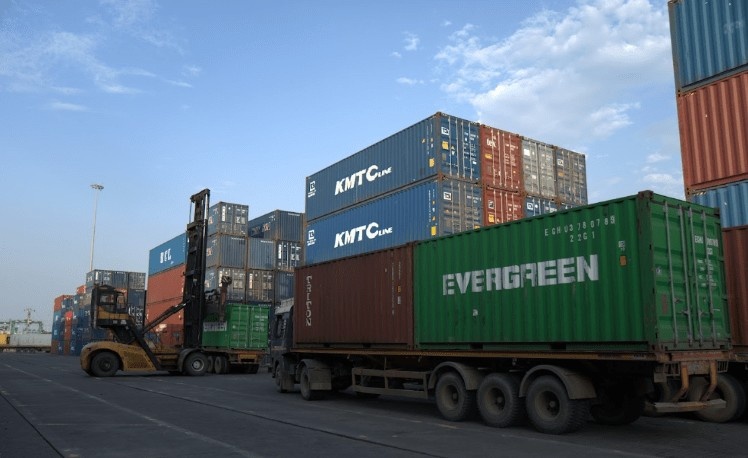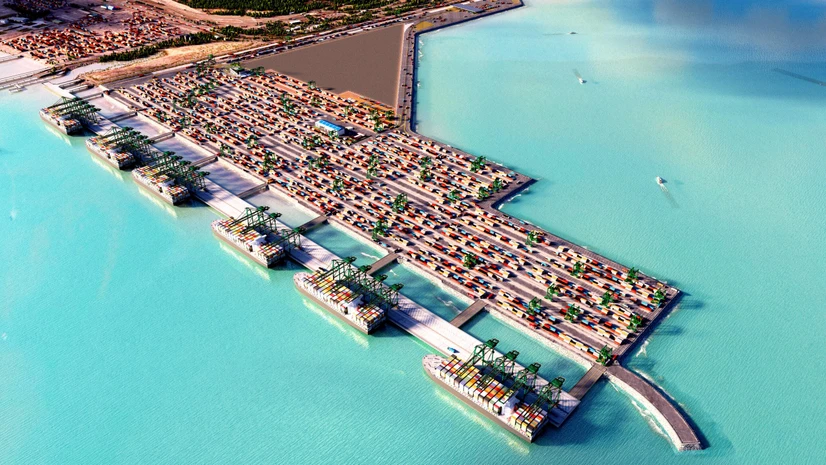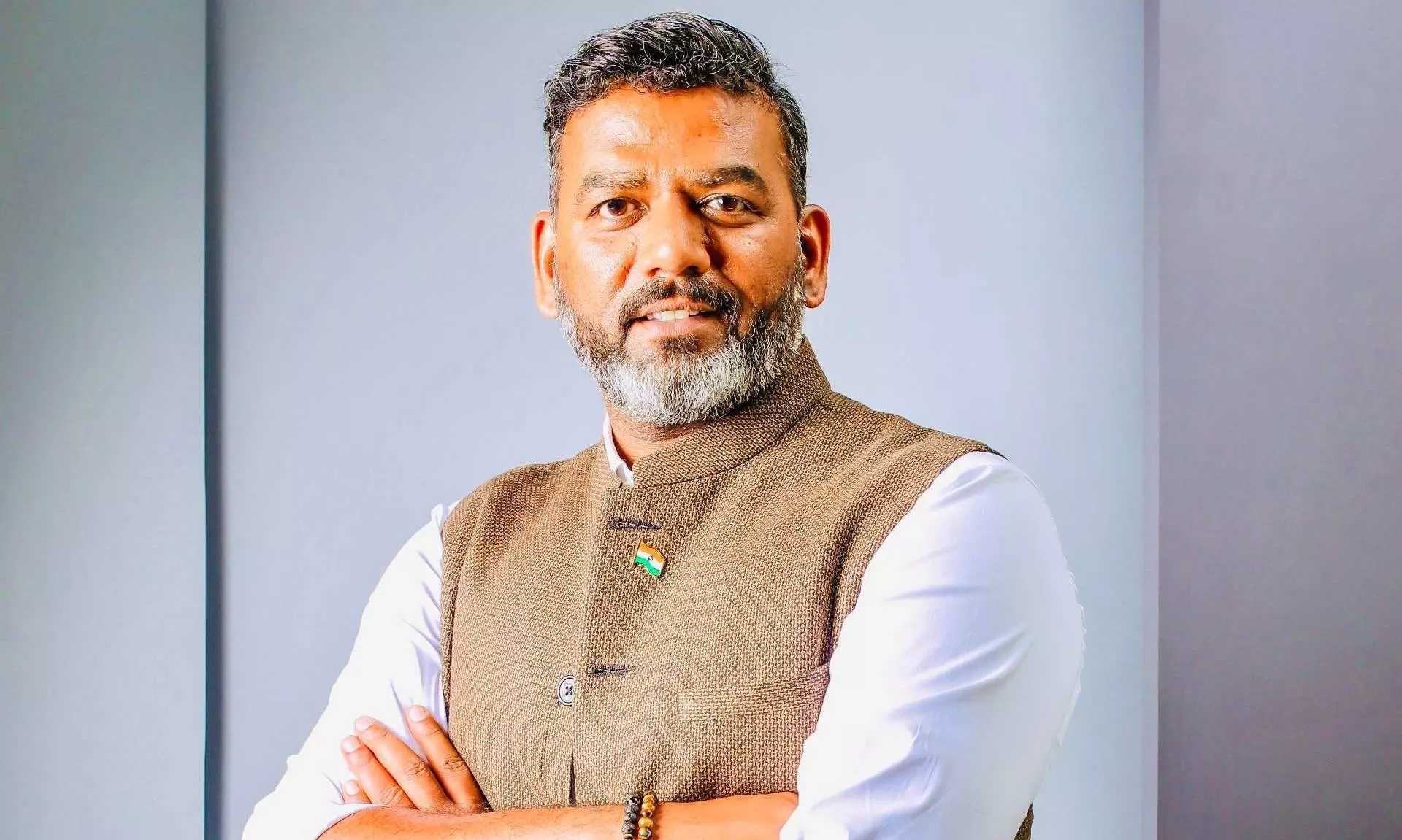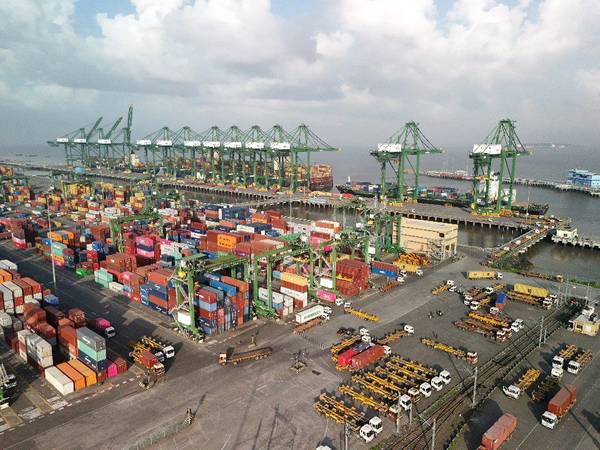India’s increased participation in global trade necessitates a strong and efficient logistics system to bolster its growing EXIM trade business. As the nation emphasizes bolstering its position in international trade, its logistics infrastructure must be supplemented.
PSA India, the leader in port operations and logistics infrastructure, is leading this transformation by enhancing port capacities, optimizing rail logistics and embracing sustainability standards. With its world-class infrastructure and digital offerings, PSA India enables efficient and seamless cargo movement, crucial to India’s competitiveness.
This blog explains how PSA India is revolutionizing India’s EXIM trade future and enabling hassle-free cargo transportation for freight forwarders, logistics players, and exporters.
Present Trends and Future Growth Estimates of India’s EXIM Trade Scenario in 2025
India’s merchandise exports will grow to USD 446.5 billion by FY2025 due to electronics, pharma, autos, and agri industries. India’s increasing proportion of world trade reflects the country’s export prowess. However, it is beset with geopolitical uncertainty, trade policy unpredictability, and logistics inefficiency that can derail growth.
A well-advanced, efficient logistics system has to be adopted to prevent these from lagging behind India on its journey toward progress in world trade. Ports are vital as gates for foreign exchange, and improvement of port infrastructure is required for the ease of EXIM trade.
PSA India: Leading the Charge in Revolutionizing Logistics
As the largest stakeholder in the port business, PSA India is spearheading the logistics revolution in India. Through its brand terminals—PSA Mumbai at Jawaharlal Nehru Port Authority (JNPA) and PSA Ameya at Mundra Port—PSA India is opening new frontiers in the field of innovation and streamlining the movement of cargo to enable a faster flow of commerce to support the growing trade in India.
1. PSA Mumbai Phase 2: Increased Capacity and Efficiency
PSA Mumbai, India’s busiest container terminal, will transform with the operational opening of Phase 2 in 2025. The phase will increase its annual capacity to 4.8 million TEUs, ranking it among the region’s biggest terminals. Installing the most modern quay cranes and electric Rubber-Tired Gantry Cranes (RTGs) will set new benchmarks for operating efficiency.
For logistics and freight companies, this expansion means faster turnaround for their clients and enhanced supply chain efficiency as commodities are created to travel swiftly from the ports to inland locations. Since PSA Mumbai already has direct rail connectivity to the Dedicated Freight Corridor (DFC), transit times would be shorter through its new facilities, facilitating faster delivery of products to foreign destinations. This multimodal connectivity makes the logistics business even more cost-effective for importers and exporters.
2. PSA Chennai: Building Rail Logistics
PSA Chennai is also building rail logistics by incorporating its enhanced rail network, including the new Hyderabad-Chennai corridor. The new connection secures key trade routes and promotes environmentally friendly freight transport, reducing transit time.
For exporters and importers, the improved rail link saves time when loading goods directly from inner zones to ports and enhances the operation of EXIM, making it quicker and smoother. Through logistics via rail enabled by these, PSA India maintains EXIM trade, and the economy and overall efficiency are improving.
3. PSA Ameya: Benchmarking Temperature-Controlled Logistics
PSA Ameya in Mundra Port offers temperature-controlled warehouses (TCWs) with 140 reefer plug points. These types of infrastructure will enable the safe movement of sensitive commodities, such as medicines, chemicals, and perishables.
As Indian pharmaceutical exports continue to expand, PSA Ameya‘s temperature control handling of cargo keeps valuable freight safe from tampering in transit. The value-added operation increases India’s competitiveness in foreign trade since exporters can trust PSA India’s logistics to handle sensitive freight safely and efficiently.
Role of PSA India in Facilitating EXIM Trade Efficiency to Ensure Seamless Cargo Movement
PSA India is spearheading India’s EXIM trade efficiency with world-class standards and sustainable working methods. As the country prepares to make a bigger pitch in global commerce, Indian logistics are being placed on the competitiveness map.
1. Sustainable Port Ecosystem
PSA India also plans to establish a green port culture. Its DFC-approved terminals have Direct Port Delivery (DPD) schemes to reduce cargo dwell time and facilitate clearance. Electric gantry cranes and green power are used in PSA terminals like PSA Mumbai to make India’s logistics industry greener.
To freight forwarders and logistics providers, PSA India’s green operations are cost-effective and align with global green supply chain best practices. Indian trade has become competitive with global trade due to these green processes and is more attractive to foreign markets demanding environmentally friendly logistics services.
2. Digital Transformation
With technology investments such as real-time tracking, predictive analytics and automated yard management, PSA India is driving visibility across the supply chain. The technology helps freight forwarders plan shipments more efficiently, alleviate congestion, and reduce delays. Additionally, research on using blockchain technology to enable more transparency in customs clearance ensures shipments are cleared without unnecessary port dwell times.
3. Automation and Infrastructure Development
Automating significant functions such as quay cranes and yard operations has enhanced productivity and removed the error factor due to human intervention at PSA India. By developing rail freight corridors and end-to-end multimodal integration, PSA India makes cargo movement from port to hinterland markets more efficient. This offers quicker, more efficient goods movement and cost and time savings for importers and exporters.
4. Strategic Benefits to Stakeholders
PSA India’s new facility and upgrade give different strategic advantages to freight forwarders, logistics operators, importers, and exporters. Better turnaround times from upgrading PSA Mumbai and PSA Chennai and improved rail connectivity mean effective supply chain management and faster turnaround times for freight forwarders.
Visibility and improved planning due to real-time monitoring make movement cost-effective from place to place. For both importers and exporters, PSA India’s more extensive port facilities allow higher volumes of trade, and temperature-controlled warehousing ensures that sensitive products are correctly handled. Additionally, environment-centred programs meet international green supply chain standards and further establish India’s reputation for global trading.
The Future of EXIM Trade in India
India’s EXIM trade is at a turning point, with the potential to increase its market share by strategically investing in logistics infrastructure. PSA India’s focus on innovation, sustainability, and operational efficiency significantly contributes to transforming India’s logistics sector.
1. Utilizing PSA Mumbai’s Phase 2 Expansion
Phase 2 completion at PSA Mumbai will integrate the terminal into India’s largest container terminal. The new facility will provide exporters and importers with better facilities and better trade volume handling, thus placing India in a good position to become a player on the global level of trading.
2. Development of E-Commerce Exports
In addition to the increase in e-commerce exports, PSA India’s online services will enable SMEs to utilize international e-commerce websites. Rapid-processing e-commerce shipments will allow India to maintain its advantage in global business, especially in the rapidly growing area of e-commerce.
3. Increased Government Support
Policies such as the Gati Shakti National Master Plan and the Production Linked Incentive (PLI) scheme will propel growth in infrastructure development, enhance logistics efficiency, and promote manufacturing-led growth of exports. All these will further boost India’s competitiveness in global trading.
Conclusion
While India aims to consolidate its position in global trade, PSA India leads the way with world-class infrastructure and innovative logistics solutions. From green port settings to multimodal transportation and digitalization, PSA India facilitates trouble-free cargo movement and simplicity of EXIM trade.
For exporters and freight forwarders, PSA India’s strategic vision offers the infrastructure and services required to thrive in a competitive world trade environment. India can become a leading global trading nation with regular investment in port infrastructure, rail transportation, and sustainability.
Frequently Asked Questions
1. How is PSA India enhancing India’s EXIM trade capabilities?
PSA India supports India’s EXIM trade by expanding its terminal capacities, such as the Phase 2 expansion at PSA Mumbai, which will increase capacity to 4.8 million TEUs. Additionally, improved rail connectivity through initiatives like the Hyderabad-Chennai rail route enhances seamless cargo movement.
2. What role does PSA India play in sustainable logistics?
PSA India is committed to sustainability through initiatives like running India’s first 100% renewable energy-powered container terminal at PSA Mumbai and adopting green technologies to reduce carbon emissions, all contributing to more eco-friendly logistics and improving India’s share in global trade.
3. How does PSA India’s infrastructure development benefit exporters and importers?
PSA India’s infrastructure upgrades, such as expanded port capacities and specialized facilities like temperature-controlled warehousing, help exporters and importers handle growing trade volumes, reduce transit times, and ensure the safe movement of sensitive goods, thereby boosting EXIM trade efficiency.










